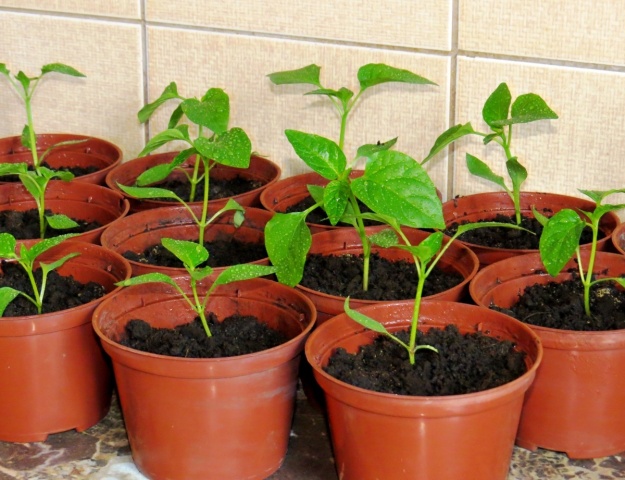 Not every experienced gardener decides to grow pepper from scratch, that is, from the time of sowing seeds to seedlings until the very harvest, not to mention newcomers. For some reason, it was believed that this is a very complex process, although there are not so many nuances in it.
Not every experienced gardener decides to grow pepper from scratch, that is, from the time of sowing seeds to seedlings until the very harvest, not to mention newcomers. For some reason, it was believed that this is a very complex process, although there are not so many nuances in it.
In the article, we consider the main issues related to the cultivation of pepper.
Content
Seed preparation
A huge assortment awaits those who wish to buy seeds in specialized stores. There are ordinary, and hybrids, and dragee, and treated with growth stimulants and fertilizers.
Preparation of ordinary seeds for sowing seedlings takes place in several stages. The first is sorting. It consists in culling "dummies." You need to put the seeds in a glass, fill them with water at room temperature, mix well and leave for 7-10 minutes.
Seeds that pop up can be safely thrown away. They are not suitable for further use.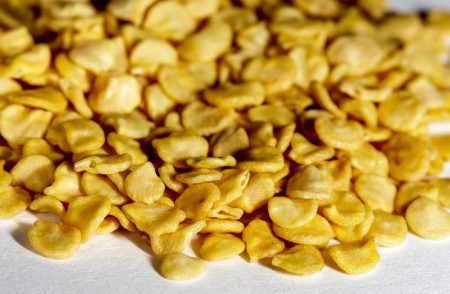
Having sunk to the bottom, it is necessary to dry slightly (just put it on a paper towel or kitchen towel so that the glass gets excess liquid), and then put it in the freezer for 3-5 minutes. Now you need to give the seeds a little rest from the tests, and before planting, soak in a solution of potassium permanganate of medium strength (the color should be saturated pink). To increase germination, you can also treat peppers before planting with growth stimulants.
Peeled and pre-treated with all necessary substances seeds are clad in a special shell. From soaking and other processing methods, it can suffer and there will be no sense. When buying such seed, you need to carefully study the information on the packaging.
Further, you can plant seeds in the soil, but many gardeners advise previously to sprout peppers in order to increase its germination.
There are several options. You can put the seeds on a saucer, lightly moisten them with water and cover them with film or glass. You can also wrap them in wet gauze or bandage.
Sowing seeds for seedlings
On average, pepper fruits are harvested 100-150 days after emergence. To accurately calculate the time of planting seeds for seedlings, you need to know what type they belong to. Early ripe varieties are planted in the soil 65 days before planting in the soil, mid-ripening varieties - 70-75, late - 75-80.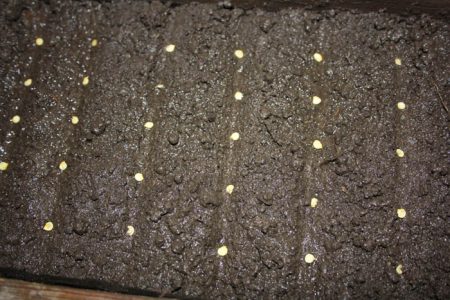
At first glance, the difference is insignificant. But it is of great importance.
Soil preparation
Pepper seedlings are demanding on the ground. The soil should be loose, nutritious. Preference is given to neutral or slightly acidic options.
The following are considered the most optimal soil mixes:
- peat, sand and sheet land in equal proportions;
- one part of compost and sand + 2 parts of turf;
- 2 parts of humus and peat + 1 part of river sand;
- natural meadow soil and sod in equal amounts (can be supplemented with a small amount of humus).
But the composition is not the most important thing. Do not forget about the sterility of the earth.
When buying ready-made mixes in stores, give preference to trusted manufacturers. The fact is that additional disinfecting work will be carried out with self-made soil, but store mixes should not always be subjected to such treatments.If it was sterilized before it went on sale, additional measures could simply kill some of its useful components. Keep this in mind.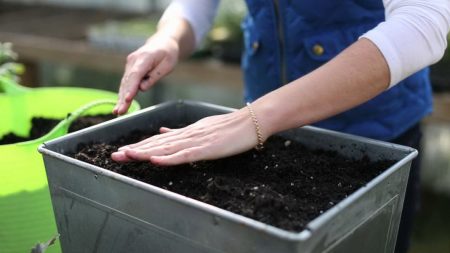
The soil can be disinfected by holding it in a water bath for 7 to 20 minutes, and also putting it in the freezer for 40-60 minutes.
Sowing
Pepper has a weak root system, so it suffers diving quite hard. Experienced gardeners plant seeds for seedlings immediately in separate pots or cups (the optimal size is 10 cm in diameter and 12-15 cm in depth). Peat tablets may also be used.
Yes, then you still have to transplant into larger containers, but the root system of the sprout will be hidden in a large coma of the earth and will not be damaged.
The seeds are not buried, but laid out on the surface of the previously moistened soil with tweezers. The distance between them should be 1.5-2 cm.
Then they just need to be gently pressed to the soil and covered with a film or glass until seedlings appear.
Peat tablets may also be used. For pepper, the optimal size is 3 cm in diameter. The tablets should be put in the tray, pour warm water and leave to swell. Excess water must be drained. In each, make a hole about one cm, sprinkle with soil and cover with a film.
It is convenient to grow peppers in cassettes. Plastic containers of different diameters and designed for a different number of seedlings are on sale in every garden shop. We advise you to choose a pallet and a transparent cover. Then you will have not just a container for seedlings, but your own mini-greenhouse, adapted for the method of lower watering (water is poured into the pan).
Both soil mix and peat tablets can be laid out in the cells.
Seedling Care
Before emergence, seedlings can be forgotten. It will take about 7-10 days.
Then the coating must be removed, and the seedlings should be transferred to a well-lit place. Remember, no matter how good the backlight is, it will not replace natural light.
Most often, seedlings are placed on window sills. In terms of lighting, this is the best option, but it should be understood that this is a place where two temperatures combine: heat from the battery and cold coming from the window itself.
If you decide to grow near the window, then it is better to raise the boxes with seedlings from the windowsill. They can be placed on a hanging shelf or build a support.
After the emergence of seedlings, seedlings begin to harden. For this, the air temperature is reduced to 15-17 degrees a week. And after that they maintain a stable regime - during the day 22-25, at night 18-20 degrees.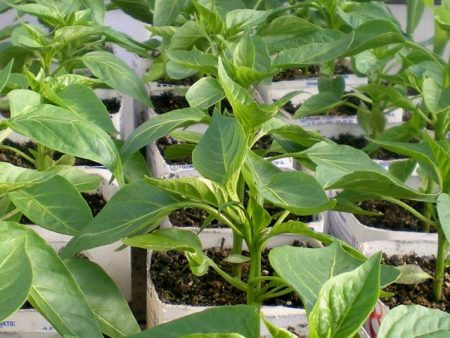
For normal development, the sprouts need a sufficient amount of oxygen, so you need to ventilate the room regularly, only for this time it is advisable to take the containers with pepper into another room so that it does not die from drafts and cold air.
Watering seedlings
Regardless of whether the seeds are sown in the soil or in peat tablets, they are pre-moistened well, therefore, after emergence, a couple of days of irrigation are not needed.
The first time this procedure is performed after the opening of the cotyledon leaves. Water should be settled and have a temperature of at least 30 degrees.
Pepper does not tolerate drought, but not only soil moisture needs to be maintained. Air must also be regularly moistened (optimum humidity 60-70%).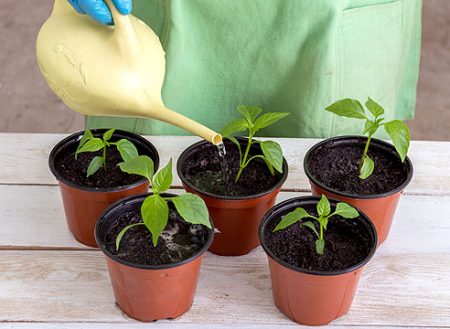
Top dressing
Many gardeners, especially beginners, make a common mistake.Seeing that the seedlings do not appear at the appointed time or slowly develop, they begin to use many growth stimulants or other drugs and thereby completely destroy the plant. It should be understood that pepper grows very slowly and sometimes it may seem withered until the first flower buds appear.
Top dressing of the root system in seedlings is carried out once, diluting 5 ml of potassium humate in 2 liters of water.
This can be done at the age of 10-14 days.
The following fertilizer is carried out during the flowering period. To do this, dissolve in 10 liters of water per gram of manganese sulfate and iron, add 1.7 g of boric acid to you, and 0.2 g of zinc sulfate.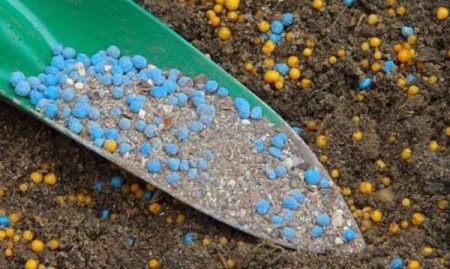
Pinch
A mandatory point for growing pepper seedlings is pinching. This is done to stimulate the development of the root system and the awakening of stepsons from the buds, in which flowers will form.
Pinching is carried out at the time of intensive development of seedlings. With sharp scissors, a part of the plant located above the 4-6 internodes is very carefully cut.
After this, side stepsons will begin to form actively. After 10-14 days, it will be necessary to remove the weakest, leaving the plant no more than 6 of the strongest sprouts.
Backlight
The difficulties in growing pepper seedlings are largely due to the long vegetative period of this plant. The daylight hours during sowing are still short, so lighting is necessary. For the normal formation of seedlings should receive a sufficient amount of light - at least 12-14 hours a day.
Today, daylight lamps are quite common and many make the mistake of believing that such light can actually replace daylight. But the fact is that a certain radiation spectrum is needed for the photosynthesis process:
- red rays are responsible for seed germination and normal flowering;
- violet and blue provide normal cell formation;
- yellow and green have no significance for the development of plants.
Thus, to highlight seedlings, it is necessary to use special phytolamps that will ensure normal and full-fledged development of plants. Fluorescent lamps may also be used. The light source should be located at a height of 20 cm from the top of the plant.
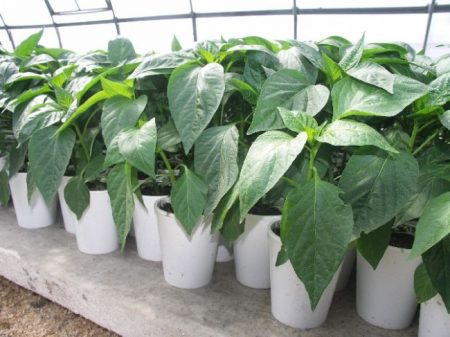
Further highlighting is carried out depending on the length of daylight hours.
Pick
Despite the recommendations to initially place the pepper separately, many old-fashioned seeds are planted in a common container. In this case, after the appearance of two or three true leaves, it must be transplanted.
Before starting the process, the soil should be well moistened. After sprouts, together with an earthen lump, transfer to a pot prepared in advance and filled with nutritious soil mixture. Take care of the roots. They should fit freely. Stomps and damage can cause the death of the entire plant.
After diving, seedlings must be preserved. To do this, maintain a stable air temperature (do not make a difference from day to night), protect them from direct sunlight.
Seedling diseases
Peppers can suffer not only after transplanting into the ground, but also during the cultivation of seedlings.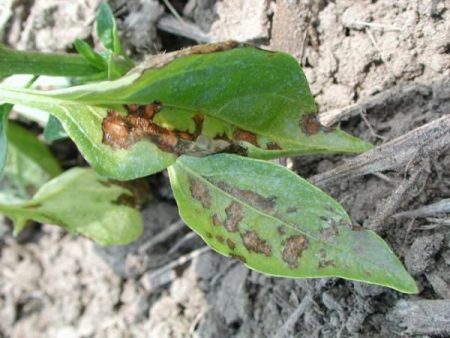
If in the phase of cotyledon leaf formation the sprout begins to turn yellow, the stem darkens and lays down, then the “black leg” is most likely the cause. This is a fungal disease. Infection occurs through the soil. The main reason is insufficient soil disinfection.Also, the pathogen can get from a diseased plant to a healthy one through the tools or containers used. You can determine the disease by a kind of constriction on the stem. If you saw her, then there is no doubt. Affected plants must be removed and the soil no longer used.
It should be noted that seedlings placed separately separately are at lower risk than densely sown in a common container.
If the seedlings begin to lag behind in growth, if partial wilting is noted, but the leaf does not change its color, then fusarium may be the cause. You can determine it by breaking the stem. The affected plant will have a brown ring inside. In more advanced forms, the leaf still begins to change color, but it turns yellow from bottom to top, from the stem.
Affected plants are removed, and for prevention, thorough disinfection of the soil, used containers and tools, as well as mandatory seed disinfection are carried out.
Signs of powdery mildew are white spots and plaque on the stem and leaves. Seedling growth slows, leaves may begin to turn yellow. Landing can be saved if timely measures are taken. For this, seedlings are treated with special bacterial fungicides.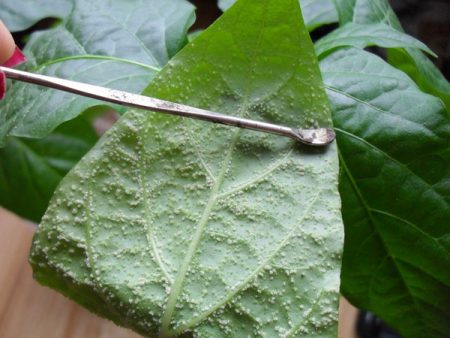
Recently, more and more complaints about the disease, which literally mows seedlings in one night. Healthy and strong shoots pleasing to the owner in the evening, drooping and completely wilted by the morning. It seems that they were poured over with boiling water. What kind of disease is not currently known. One thing is clear. It will not be possible to save such seedlings and it is better not to use the soil after it.
Hardening
When the seedlings reach a height of 20-25 cm, when they will already have 7-9 leaves and large buds, you can begin to prepare them for moving into the open ground. The most important thing is to conduct hardening.
For this, the seedlings are moved to a room with a temperature of 16-18 degrees for a short period of time, gradually increasing it. After that, you can lower the temperature to +13 and continue daily procedures.
When the pepper gets used to the air temperature drops, it must be prepared for direct sunlight. Time is also gradually increasing.
3-5 days before planting, you can leave the seedlings at night on the street, but only by protecting it if the air is still very cold. The hardening process lasts approximately 2 weeks.
Bed preparation
To get a good harvest of pepper, you need to take care not only of the seedlings, but also of the garden, where it will eventually be transplanted.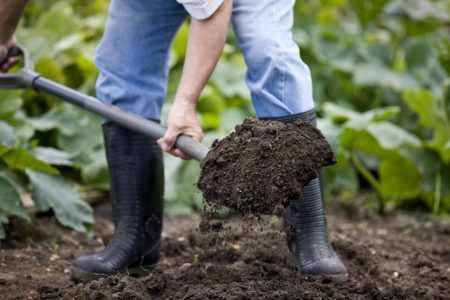
The site should be protected from wind and direct sunlight, but do not need to place it in a lowland and shade.
According to the rules of crop rotation, legumes, cucumbers, root crops or greens should be grown on the ground before pepper. You cannot plant pepper in the same place twice in a row; it also grows poorly after tomatoes, eggplant, and tobacco.
Pepper loves fertile, loose soil so that it retains moisture well and at the same time passes air through. To do this, sawdust, manure and peat are added to it during digging in the fall.
In spring, the soil will need to be well rake up. It does not hurt to add a glass of wood ash and a teaspoon of urea per kilo meter. If the site is completely exhausted, they also pour it on the table. spoon of potassium and superphosphate.
After a couple of weeks, the bed should be poured with a hot solution of mullein (half a kilo per 10 liters of water) or sodium humate (table. Spoon for 10 liters of water).
Landing
By the time of moving to a permanent "place of residence" on the pepper should be 8-10 leaves and several buds formed. The height of the sprout, depending on the variety, can reach 20-25 cm. Air temperature is also of great importance. At night, it should not fall below 16-18 degrees.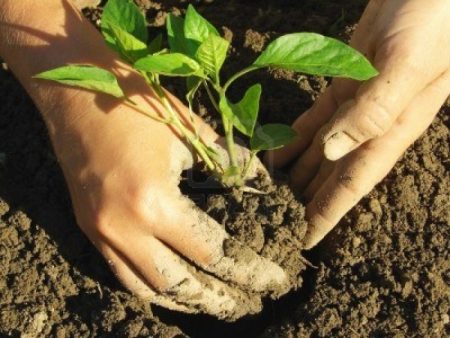
Wells are placed at a distance of 50 cm from each other, row spacing should be 60 cm wide.
In depth and width, focus on the size of the root system.It should be located freely, and the root neck should be located at the level of soil incorporation.
In each well, put a spoonful of mineral fertilizer and pour about 3-4 liters of water. After gently fill the stem with soil.
Landing is preferably carried out in the afternoon. The first days of seedlings can be weak, some even fade. Do not touch her. This is a period of adaptation.
Pepper Care
A couple of days after planting in open ground, you can start watering. The procedure is carried out exclusively with standing water 1-2 liters under the root. This should be done once every 2-3 days, if there is a drought, then daily. It is advisable to water in the evening. If the leaves begin to dry, you can spray them at night.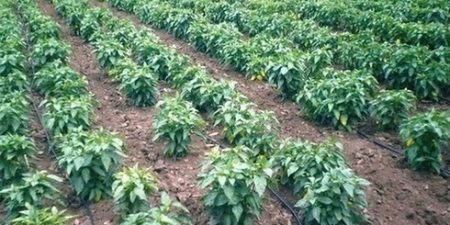
The first two weeks of the soil around the holes is better not to touch, so as not to injure the root system, but after the procedure should be regular.
Two weeks after planting in the ground, the first top dressing of the root system is carried out. It is carried out using slurry (diluted 1: 4 with water) or bird droppings (1:15). The soil is neatly raked from the plant, fertilized and buried on top. It turns out 2 in one - and fertilizer, and loosening.
Pepper needs nutrition during fruiting. You can use again the mullein and bird droppings. But for an additional effect, ammonium nitrate can also be used (instructions for use on the package).
When using ready-made fertilizer in store, it is recommended to choose those containing a minimal amount of chlorine or without it at all.
Reviews
Natalya Nikolaevna, 49 years old
I have been living in my house since childhood and as far as I can remember, we always bought ready-made pepper seedlings. Tomatoes and eggplants were grown by themselves, but here they did not risk it. In fact, everything is not as scary as it seems, but how delicious it turns out if you grow from scratch to get the crop. Yes, you have to take care of the backlight, top dressing, and other important points, but it's worth it.
Sergey Ivanovich, 58 years old
My wife has been trying for several years to grow pepper seedlings on her own. It doesn’t work out. Either it picks the wrong varieties, or what other reason exists, I don’t know, but all the sprouts, reaching a height of 10-15 cm, simply begin to wither and die. I have to buy ready-made.
Bell peppers are loved in every family. To grow it yourself on your site means to be confident in quality and environmental cleanliness. And to grow independently from the moment of sowing the seeds until the harvest is a real achievement. Be sure to try it. Such work will bring you only pleasure.




 Calorie pepper stuffed with meat and rice - BZHU per 100 grams
Calorie pepper stuffed with meat and rice - BZHU per 100 grams Gorky pepper - the best varieties for open ground
Gorky pepper - the best varieties for open ground Hot pepper seeds - the best varieties for open ground and reviews
Hot pepper seeds - the best varieties for open ground and reviews Capsicum tincture for hair - how to use and reviews
Capsicum tincture for hair - how to use and reviews
Vera
how to subscribe to the newsletter garden without